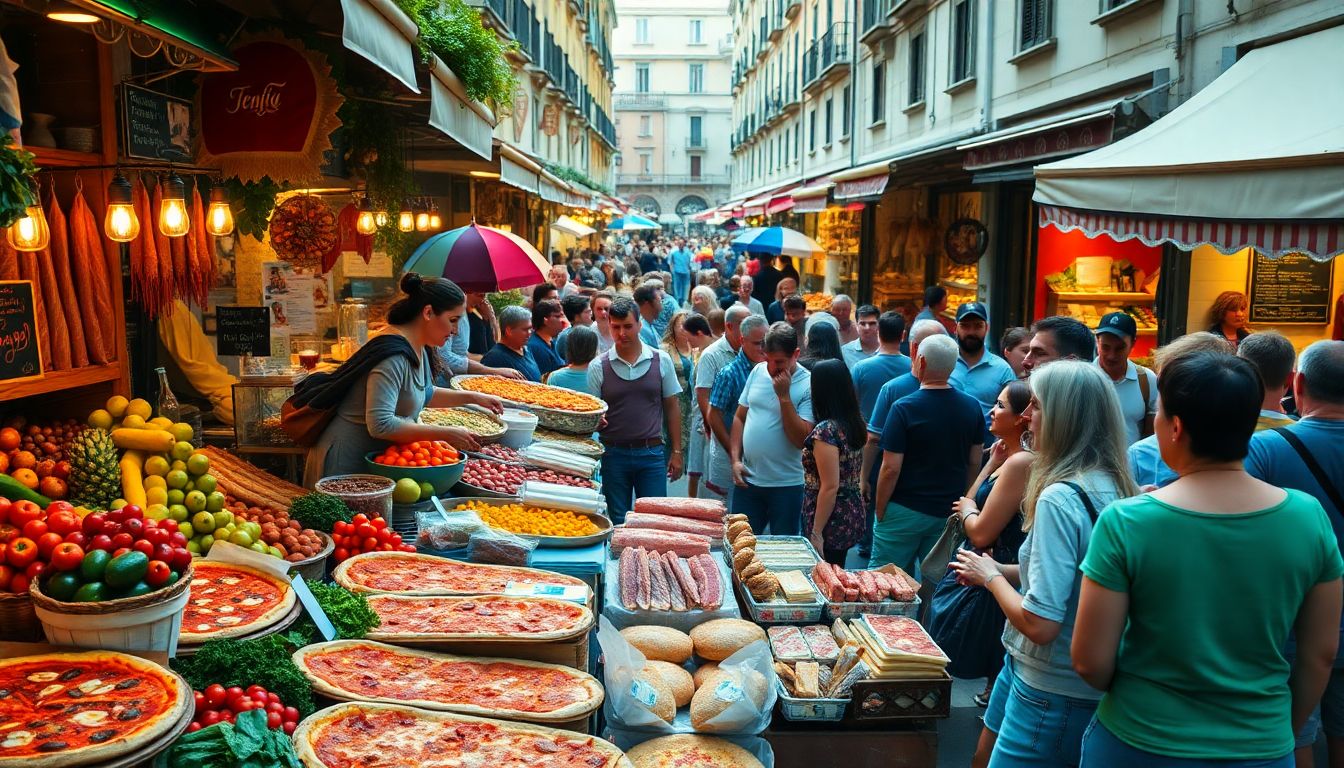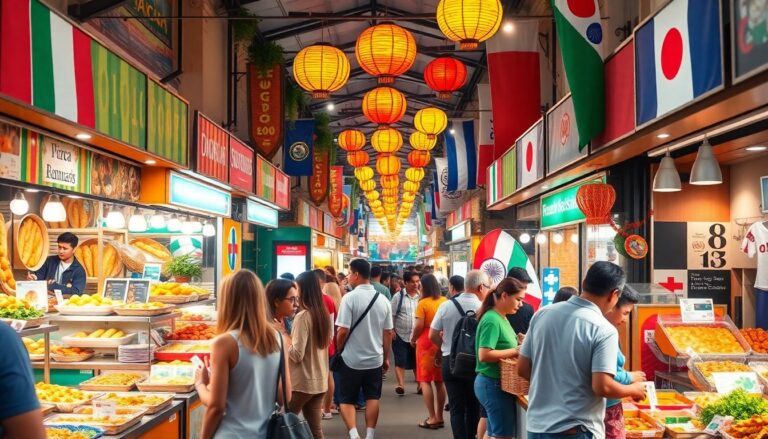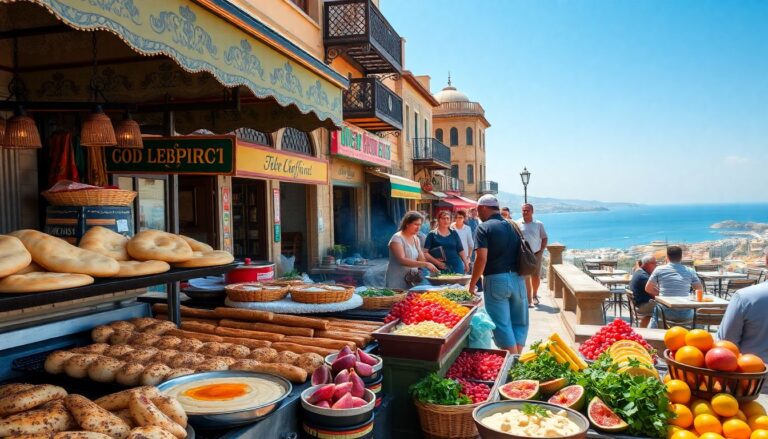
Discover Italy’s Most Famous Dishes and Street Food: A Culinary Journey
Italian food is more than just a meal. It’s a celebration of fresh ingredients, regional traditions, and centuries of culinary history. From the rolling hills of Tuscany to the sunny shores of Sicily, each area boasts distinct flavors and specialties. Get ready to explore a world of must-try dishes and unforgettable street food experiences!
Pizza: A Slice of Italian History
Pizza is one of Italy’s most famous food exports. It started as a simple flatbread in Naples. Over time, it turned into the delicious dish that’s loved across the globe. The evolution of pizza reflects Italian ingenuity and passion for food.
Neapolitan Pizza: The Original
Neapolitan pizza is truly special. Two iconic versions stand out: Margherita and Marinara. The Margherita features San Marzano tomatoes, buffalo mozzarella, fresh basil, and extra virgin olive oil. The Marinara boasts San Marzano tomatoes, garlic, oregano, and olive oil. Both pizzas get cooked in wood-fired ovens at high temperatures. This creates a crust that is both airy and slightly charred.
Regional Pizza Variations
Pizza comes in many forms across Italy. Roman pizza is thin and crispy, while Sicilian pizza has a thicker, spongy crust. Pizza al Taglio is baked in large rectangular trays and sold by the slice. Pizza Bianca is a simple flatbread seasoned with olive oil, salt, and rosemary.
Pasta: More Than Just Noodles
Pasta is a staple of the Italian diet. From north to south, each area has its own favorite shapes and sauces. Whether it’s long strands or tiny shells, pasta is an everyday delight. Pasta dishes are a pure expression of Italian culinary art.
Spaghetti alla Carbonara: Creamy Perfection
Spaghetti alla Carbonara is a Roman classic. Its rich flavor comes from eggs, guanciale (cured pork cheek), Pecorino Romano cheese, and black pepper. Some chefs add cream, which sparks heated debates among purists. The key is to cook the pasta al dente and combine it with the other ingredients. This creates a creamy, satisfying sauce.
Regional Pasta Specialties
Cacio e Pepe is another Roman favorite. This simple pasta dish features just three ingredients: pasta, Pecorino Romano cheese, and black pepper. Pesto Genovese, from Liguria, is made with fresh basil, pine nuts, garlic, Parmesan cheese, Pecorino Sardo cheese, and olive oil. In Emilia-Romagna, Ragu alla Bolognese is a hearty meat sauce served with tagliatelle.
Arancini: Sicily’s Golden Treat
Arancini are stuffed rice balls. These savory treats are a popular Sicilian street food. The history of arancini goes back to the Middle Ages. Today, they are a symbol of Sicilian cuisine.
Classic Arancini Flavors
The most common arancini fillings include ragu (meat sauce) and mozzarella. The rice is mixed with saffron. This gives the arancini their signature golden color. Once filled, they are coated in breadcrumbs. Then they are deep-fried until crispy.
Regional Variations and Modern Twists
There are different types of arancini across Sicily. Some include spinach or mushrooms. Others have creative fillings. No matter the filling, arancini are a delicious snack.
Gelato: A Sweet Italian Icon
Gelato is the Italian version of ice cream. It has a lower fat content and a denser texture. Gelato is made with milk, cream, sugar, and flavorings. The result is a richer, more intense flavor experience.
Classic Gelato Flavors
Popular gelato flavors include pistachio, hazelnut, chocolate, and stracciatella (vanilla with chocolate shavings). Each scoop provides a burst of flavor. You will find both traditional flavors and innovative combinations.
Regional Gelato Specialties
Some regions have their own unique gelato flavors. It’s worth seeking out local artisan gelato shops. They use fresh, local ingredients. They also make gelato in small batches.
Street Food Delights: Eating on the Go
Italian street food is a cheap and exciting way to taste local flavors. Every city has its own specialties. You can grab a quick bite while exploring the streets. It’s a simple way to savor the true essence of Italian cuisine.
Lampredotto (Florence)
Lampredotto is a Florentine specialty. It is made from the fourth stomach of a cow. The lampredotto gets slow-cooked in a broth. Then it gets sliced and served in a bread roll. It is often seasoned with salsa verde or spicy oil.
Supplì (Rome)
Supplì are fried rice balls with mozzarella. In Rome, they are a beloved street food. Unlike arancini, supplì are often smaller and more elongated. The rice is usually cooked in tomato sauce. A piece of mozzarella gets placed in the center. This makes the cheese melt when fried.
Conclusion
Italian cuisine is diverse and flavorful. From the first slice of pizza to the last bite of gelato, there’s always something new to discover. Whether you’re visiting Italy or exploring local restaurants, be sure to try these amazing dishes. Embrace the richness and diversity of Italian food culture!







